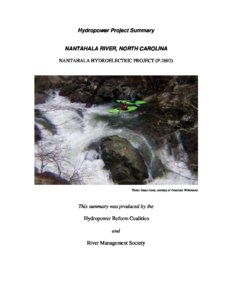The Hydropower Myth, Part II; Is Hydropower as ‘Green’ as Promised?
Enormous releases of greenhouse gas emissions, species decline and extinction, and habitat fragmentation. While you’d be right if you assumed these were characteristics of fossil-fuel plants that have had devastating impacts on our planet, you might be surprised that these are also representative of the Hydrosystem.
Long touted as clean, greenhouse-free power, new science has shown that the hydroprojects can be large emitters of not only CO2, but also of the more potent and damaging greenhouse gas, methane (34x more potent than CO2) (Demmer, et. al; 2016). While these emissions are currently not cataloged in global greenhouse emissions, thanks to lobbying efforts from hydropower groups, many dams have emissions equaling or exceeding fossil fuel plants (Ocko, Hamburg; 2019). The US Bureau of Reclamation has also taken note and is performing an accounting of the emissions of the 337 reservoirs it manages from dams.
Dave Raff, a science advisor to the Bureau of Reclamation, states, “We’re engaged in trying to understand what the different mechanisms are for reservoirs as they generate these greenhouse gases,” Raff says. “And ultimately, what are the management levers we have to pull that could mitigate those. I do think we feel a sense of urgency to be on that path.”
While new studies continue to emerge about the greenhouse emissions of dams and their associated reservoirs, in addition to dispelling the myth that hydropower is greenhouse gas-free, there is the simple and undisputed fact that dams fragment habitat and cause the decline of aquatic species. Dam construction has serious consequences for the aquatic ecosystems, most notably the “barrier effect”, or the prevention of an organism, such as a fish, from migrating throughout the system. The four Lower Snake River dams showcase this on a monumental scale, as they have been the primary cause of the extinction trajectory of Snake River salmon and steelhead (Fillardo, et. al; Scientists’ letter on the need for lower Snake River dam removal, 2021). River restoration, through dam removal, has led to many of the greatest species recovery stories ever, including salmon on the Elwha River, and a thought to be extinct run of alewives in the Kennebec River, now numbering into the millions after the removal of the Halifax and Edwards dams (Natural Resources Council of Maine). Fish passage is often insufficient (Brown, Jed; Fish and hydropower on the U.S. Atlantic coast: failed fisheries policies from half-way technologies), only supports passage of adult fish (lower Snake River dams), or lacks fish passage systems altogether.
While freshwater ecosystems only cover less than 1% of the earth’s surface, they are home to approximately 40% of the world’s biodiversity. At present, large free-flowing rivers remain in only a few regions of the world. According to the National Academy of the Sciences, the contribution of current dams to habitat fragmentation is highest in China, India, South Africa, and the United States (Barbarossa, Valerio; Proceedings of the National Academy of Sciences).
Hydropower has long been the champion of clean energy advocates, but clearly, systems that are directly causing the extinction of keystone species, and oftentimes emitting huge amounts of greenhouse gasses, should no longer be considered the standard-bearer of a green future. It is time to redefine what we consider green energy.


